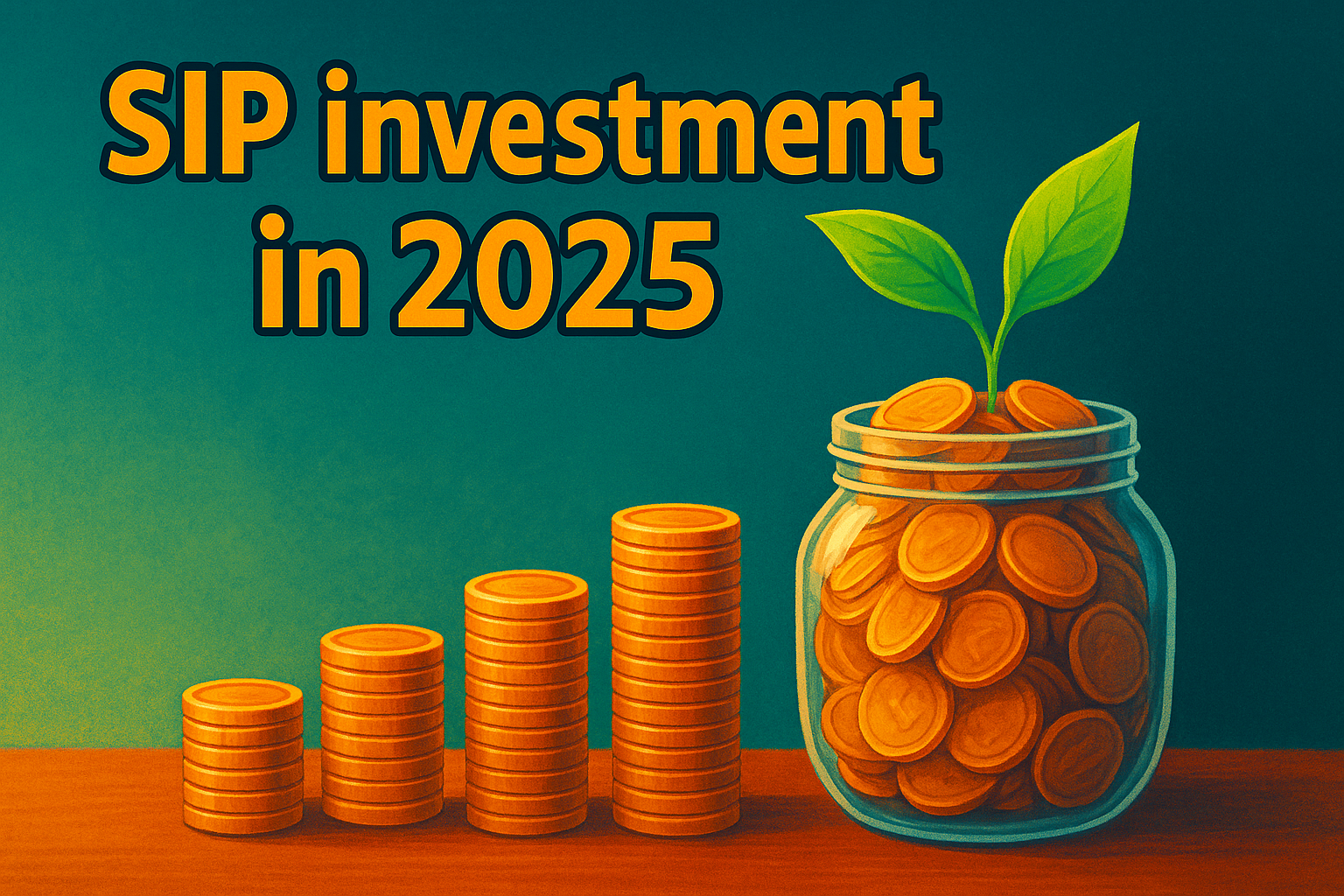15 Best Saving Plans to Invest in 2025
2024-12-25
0 Comments

There is virtually no investment that might not be available in the market, so saving for the future should be wisely done. This article gives a brief description of the fifteen best saving plans to invest in the year 2025.
Table of Contents
1. National Savings Certificate
The National Savings Certificate, or NSC, is a savings scheme being offered by the banks and post offices that is backed by the Indian government. NSC has a minimum term of 6 years, and the interest rate is worked on an annual basis. It has a tax exemption provision under Section 80C of the Income Tax Act, while the investment made under NSC is also free from wealth tax.
2. Senior Citizen Savings Scheme
Senior Citizen Savings Scheme (SCSS) is an investment scheme that is meant for persons who are 60 years and older. It pays a high rate of interest and can be taken in a minimum amount of Rs. 1,000 only, further in multiples of Rs. 1,000 only. The term of the scheme is five years, with an optional extension of another three years. The interest charged is annual, and the investment made under SCSS is the one that qualifies for tax exemptions under Section 80C of the Income Tax Act.
3. Recurring deposits
A recurring deposit (RD) is a kind of investment or savings scheme in which a regular deposit is made every month for a particular number of months to create a steady amount of money. The term starts from six months up to 10 years, and the rate of interest is comparatively a little higher than the normal savings account. RDs are convenient for people who wish to set small portions systematically and obtain reasonable interest in the same.
4. Post Office Monthly Income Scheme (MIS)
The Post Office Monthly Income Scheme is one of the most successful and attractive savings plans launched by Indian Postal Service. It facilitates the members to provide minimum weekly deposits of Rs. 1,500 to a maximum of Rs. 900000 in multiples of Rs. 1000. The medium- and long-term perspective of the scheme has been set at five years, with the provision to extend it for five more years. The interest charged is 6.6% per annum earning and credited to the account monthly.
5. Public Provident Fund (PPF)
PPF stands for Public Provident Fund—a long-term savings deposit scheme aimed at the people of India with an assurance by the government. Minimum PPF maturity period is 15 years, and the annual limit of PPF investment is Rs. 1.5 lakhs. The interest rate, like at many other banks, is reviewed on an annual basis and, as of now, stands at 7.1% per annum. PPF provides tax deduction under Section 80C, and the maturity amount is tax-free.
6. Kisan Vikas Patra (KVP)
Kisan Vikas Patra (KVP) is an investment and savings plan intended for farmers as well as other population groups. It enables these deposit amounts with a minimum of Rs. 1,000 and a maximum of Rs 1.5 lakhs in multiplications of Rs 100. The term of the scheme is 124 months, and the amount invested here in KVP is also an exempted amount under Section 80-C.
7. Sukanya Samriddhi Yojana (SSY)
The savings scheme that the government of India endorses for a girl child is Sukanya Samriddhi Yojana (SSY). The investment permitted under this option is a minimum of Rs. 1,000/— and a maximum of Rs. 1.5 lakhs per annum. The tenor of the scheme is 21 years or on the attainment of 18 years by the girl, whichever is earlier. It is reviewed every year, and as its latest value, it has 7.6% per one year. The investment made under SSY is entitled to a tax deduction benefit under Section 80C for the corresponding financial year.
8. Atal Pension Yojana
Another social security scheme launched under the administration of the government is the Atal Pension Yojana (APY), which is for people aged 18 to 40. It enables a pension of Rs 1000 at least at the age of 60 and a pension of Rs 5000 at the most. The minimum contribution for a Rs. 1,000 pension is Rs. 42 per month, and the maximum contribution is Rs. 1,883 per month for a Rs. 5,000 pension. The tenure of the scheme is 40 years.
9. Employee Provident Fund (EPF)
The Employee Provident Fund scheme is a statutory money scheme for salary earners in India. It permits a contribution of 12% of the basic salary and an equivalent contribution from the employer. It is floated on an annual basis, and as of now, it stands at 8.5% per annum. The vesting period of the scheme is at 60 years or the time the employee retires, whichever comes first. The amount accumulates income tax-free, and the one saved can be withdrawn once the individual is through with employment or self-employment.
10. An Introduction to Pradhan Mantri Jan Dhan Yojana
Pradhan Mantri Jan Dhan Yojana (PMJDY) is an India government-sponsored cashless scheme to extend banking facilities to the villages and other unserved/underserved areas of the country. Gives a passbook-based savings bank account with no minimum balance to be kept in the account, and no initial amount is required in the account. The account holders also receive Rs. 1 lakh accidental insurance and Rs. 30,000 life insurance by opening and joining the Pradhan Mantri Jeevan Jyoti Bima Yojana and Pradhan Mantri Suraksha Bima Yojana accounts.
11. Voluntary Provident Fund (VPF)
The Voluntary Provident Fund, also known as VPF, is a saving part of EPF where the employees can contribute extra amounts apart from regular EPF contributions. It permits an unlimited contribution in multiples of rupees only. 6. The interest rate is equivalent to EPF, currently at 8.5% per annum. It is an income-tax-free cash balance that can be withdrawn once the individual reaches retirement age.
12. Nation Pension Scheme (NPS)
The National Pension Scheme (NPS) is a government-supported pension scheme and is introduced for all citizens of India and the unorganized sector, especially. It admits a minimum annual contribution of Rs 1000, but the maximum annual contribution is Rs 1.5 lakhs only. The tenor of the scheme is 65 years or discretionary age of 60, whichever is earlier in age, is availed by the subscriber. Even disabling pension is partially exempt from income tax, and the subscriber must buy an annuity to get the pension.
13. Linked Insurance Savings Plans (LISPS)
ULIPs are insurance and investment products that are sold by insurance companies for helping the buyers get insurance along with investment. They permit an investment in equity and/or debt securities, and the income that results therefrom depends on the performance of the selected fund. ULIPs provide insurance and investment with the tax advantage according to Section 80C and Section 10(10D) of the Income Tax Act.
14. Capital Guarantee Plans
Capital Guarantee Plans may be defined as investment products that have the objective of securing a predetermined amount of return on investment. Such plans generally undertake investments in primarily income-bearing securities like government securities, bonds, debentures, etc. and assure a fixed minimum rate of return on the amount invested. Capital Guarantee Plans can be safely recommended for those conservative investors who would like to secure even their initial capital and receive at least a certain level of income.
15. Endowment Plans
Endowment plans are products that are offered by insurance companies that are a combination of insurance and investment products. They offer life insurance solutions and pay the maturity amount on the policyholder’s survival till the term of the loan. The returns are subject to the returns generated on the fund, selected by the investor, and most of the endowment plans have tax benefits under Section 80C and Section 10(10D) of the Income Tax Act.
Conclusion
There are various saving plans offered by different companies, and therefore, the right one for you will depend more on the saver’s objectives, risk-taking ability, and time frame, among others. The following is a list of attributes that need to be evaluated before deciding on a saving plan: the tax implication value, investment opportunities, and the dispersal value. Hence, if you decide to do a proper saving, you will be sure of a good light at the end of the tunnel since you will be receiving your money back with a steady return.
Add a Comment
Popular Categories
Popular Blog Posts
SIP or Crypto? The Answer Will Surprise You
28 Jul, 2025
EV Stocks in India: Boom or Bubble?
18 Jul, 2025
Search For Financenu Service
Apply For Financial Service














